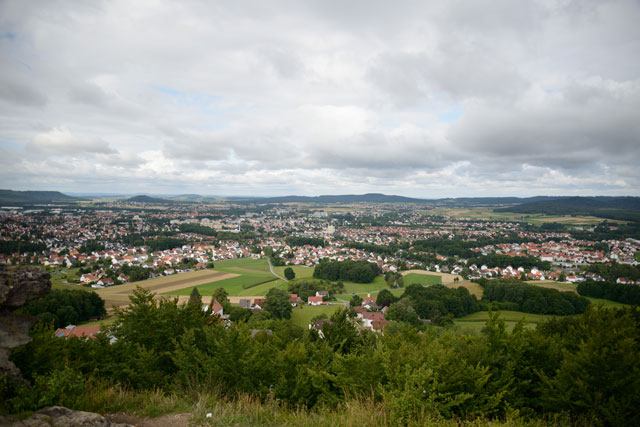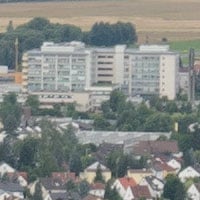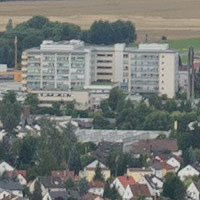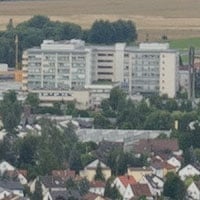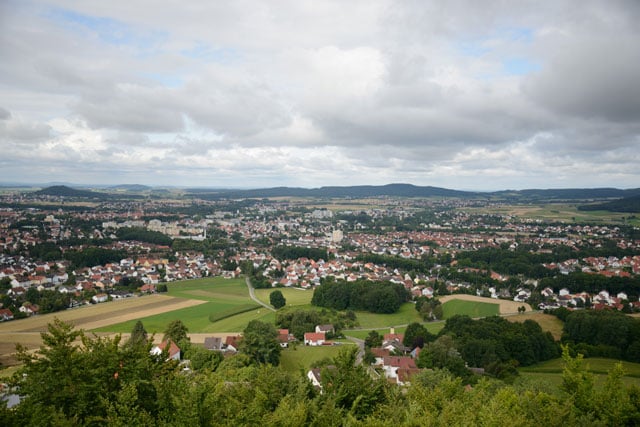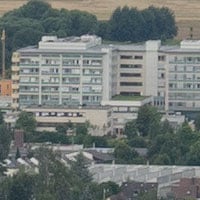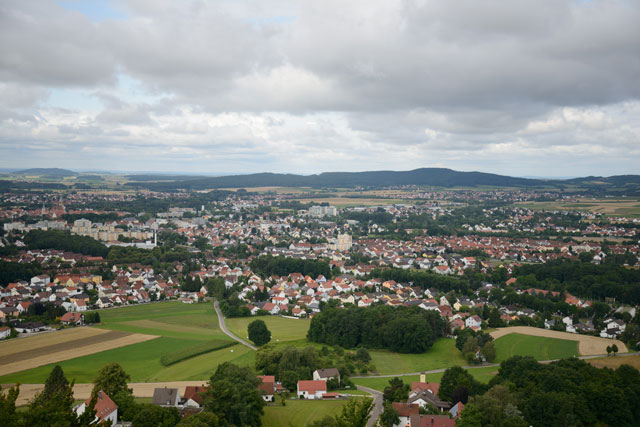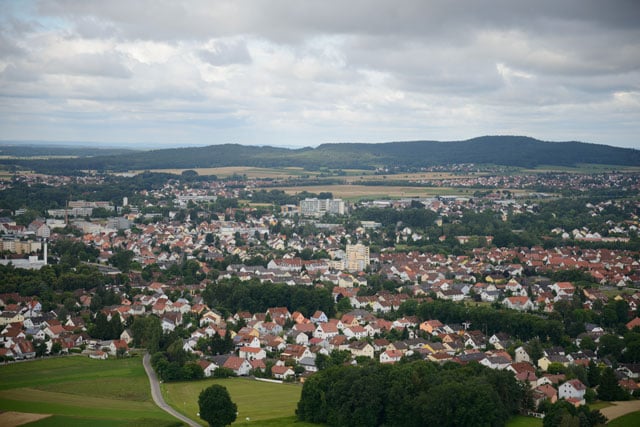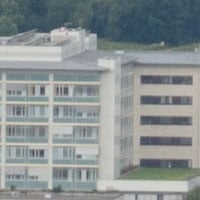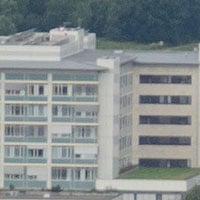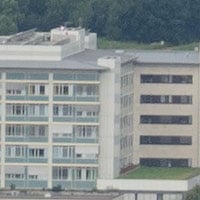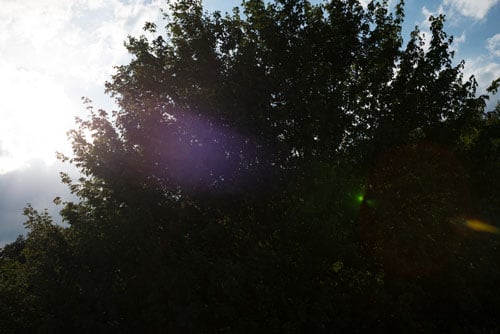Nikon 24-85mm VR review
-
-
Written by Thomas
Quality
Sharpness and contrast
Let’s have a look at the theoretical performance (MTF-charts) at the wide and the long end first:
Nikkor AF-S 24-85mm f/3.5-4.5G VR MTF | ||
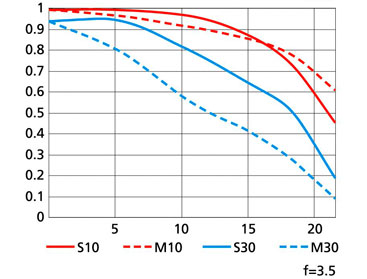 | 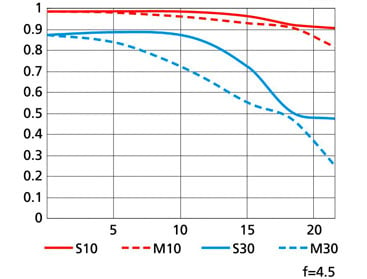 | |
| at 24mm, f3.5 | at 85mm, f4.5 | |
These charts show the lens-performance at the largest aperture, in this case for f3.5 at 24mm and f4.5 at 85mm. Higher values are better and the closer the dotted and the continuous lines of each color are together the less astigmatism (= resolution depends on the orientation of the test-pattern) the lens has. The x-axis displays the distance from the optical axis (=center of the sensor) in mm. I’ll show you the real-life performance at 4 mm (center), 13 mm (DX-corner), and 20 mm (FX-corner) on a D800.
From the charts the new lens should perform better over the complete range than its predecessor, the AF 24-85mm f/2.8-4.0D. Although this comparison is a bit unfair as the older lens has a 2/3 larger aperture on the wide end (resp. 1/3 of a stop on the long end). But still the new design shows some pronounced roll-off to the corners at the wide end and the question will be how much you have to stop down or zoom-in to get good corner performance for either landscape or architecture photography. Let’s see how this theoretical performance translates into real life results in the sharpness test based on Siemens-stars.
What follows are near-center results (first column) followed by DX-corner results and FX-corner results on a D800. The D800 results from the DX-corner should be a very good approximation for performance on a 16MP DX sensor (like the D7000), because the pixel-pitch of both sensors are the same. But differences in the AA-filter and micro-lens-design of a D800 and a D7000 might yield different end-results.
Processing was done in Lightroom 4 from RAW at camera standard settings. Noise-reduction is set to 0, sharpening to 70/0.5/36/10, with no extra tone, color, or saturation-adjustment. White-balance was adjusted to a neutral white and I did some exposure compensation to make the brightness match. CA-removal is ON.
These are 100% crops!
Let’s have a look at the performance at 24mm first:
Nikkor AF-S 24-85mm f/3.5-4.5G VR with Nikon D800 100% crop from center | Nikkor AF-S 24-85mm f/3.5-4.5G VR with Nikon D800 100% crop from DX-corner | Nikkor AF-S 24-85mm f/3.5-4.5G VR with Nikon D800 100% crop from FX-corner |
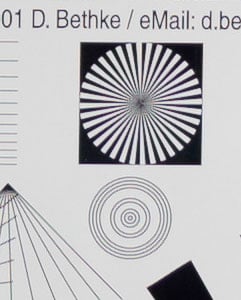 | 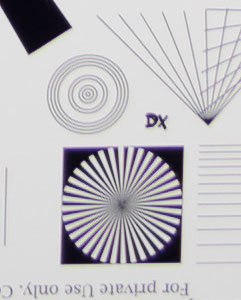 | 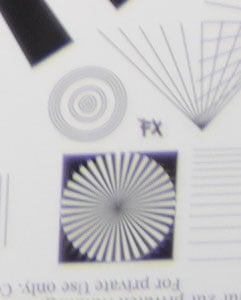 |
24mm, f3.5, 100 ISO | 24mm, f3.5, 100 ISO | 24mm, f3.5, 100 ISO |
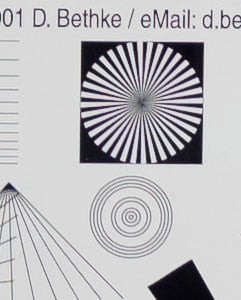 | 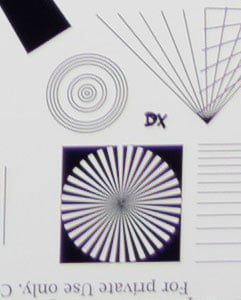 | 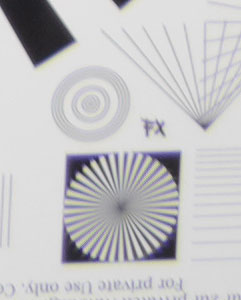 |
24mm, f4.0, 100 ISO | 24mm, f4.0, 100 ISO | 24mm, f4.0, 100 ISO |
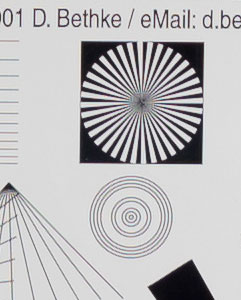 | 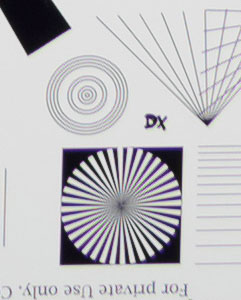 | 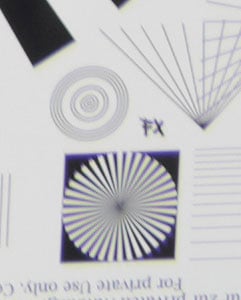 |
24mm, f5.6, 100 ISO | 24mm, f5.6, 100 ISO | 24mm, f5.6, 100 ISO |
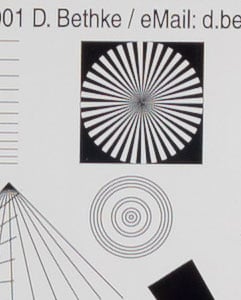 | 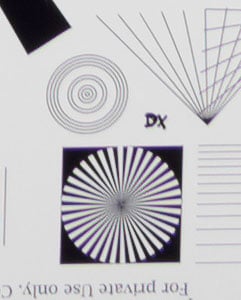 | 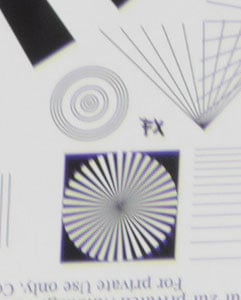 |
24mm, f8.0, 100 ISO | 24mm, f8.0, 100 ISO | 24mm, f8.0, 100 ISO |
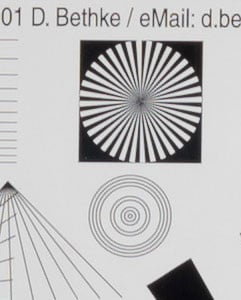 | 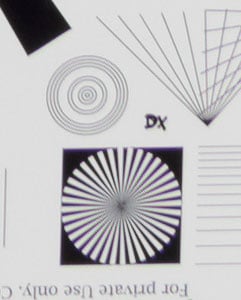 | 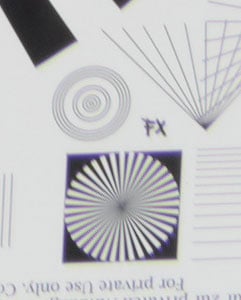 |
24mm, f11, 100 ISO | 24mm, f11, 100 ISO | 24mm, f11, 100 ISO |
These 100% crops directly from a 36MP D800 sensor show that this lens performs very well in the center. Resolution is so high indeed that you can easily see the effect of diffraction setting in at f11. The performance in the DX-corner is also very good even at f3.5 but suffers from clearly visible distortions. But there’s a clear drop in performance towards the FX-corner with even more pronounced barrel-distortions. Contrast suffers from a veiling glare and resolution is limited too especially in the meridional orientation. Stopping down to f5.6 recovers some of the lost contrast, but sharpness does not really ever come close to DX-corner levels. Still a respectable result overall.
Now let’s move on to 35mm:
Nikkor AF-S 24-85mm f/3.5-4.5G VR with Nikon D800 100% crop from center | Nikkor AF-S 24-85mm f/3.5-4.5G VR with Nikon D800 100% crop from DX-corner | Nikkor AF-S 24-85mm f/3.5-4.5G VR with Nikon D800 100% crop from FX-corner |
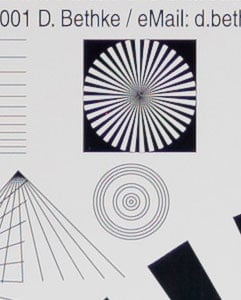 | 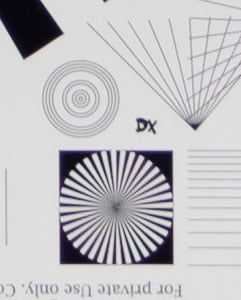 | 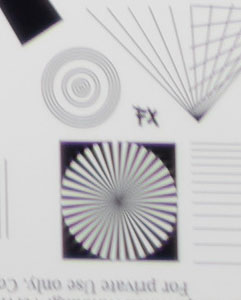 |
35mm, f4.0, 100 ISO | 35mm, f4.0, 100 ISO | 35mm, f4.0, 100 ISO |
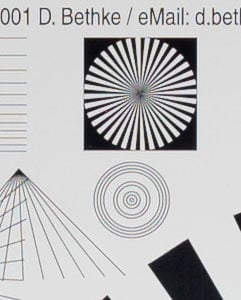 | 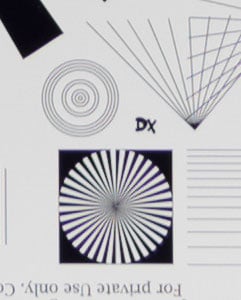 | 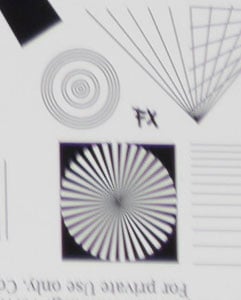 |
35mm, f5.6, 100 ISO | 35mm, f5.6, 100 ISO | 35mm, f5.6, 100 ISO |
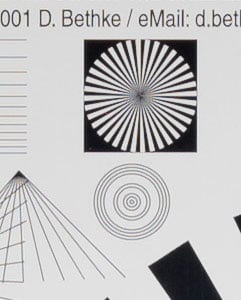 | 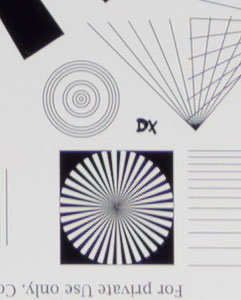 | 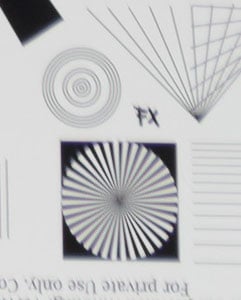 |
35mm, f8.0, 100 ISO | 35mm, f8.0, 100 ISO | 35mm, f8.0, 100 ISO |
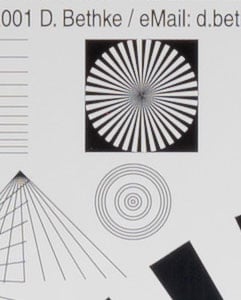 | 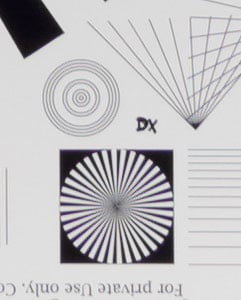 | 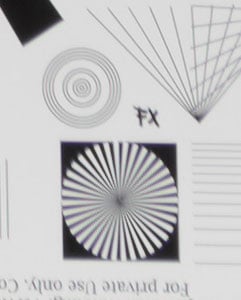 |
35mm, f11, 100 ISO | 35mm, f11, 100 ISO | 35mm, f11, 100 ISO |
This lens continues to impress with very good center performance. And remember: the star-targets and the concentric circles on the left all already 4-5 mm off center, defining a broader sweet-spot of 8-10 mm diameter than a simply dead-center target could measure. The DX-corner is quite good wide open but does not sharpen-up to crisp performance even at f8. The biggest improvement in the FX-corner is the much reduced distortions. But resolution still suffers from astigmatism and/or spherical aberrations up to f11.
Performance at 50mm:
Nikkor AF-S 24-85mm f/3.5-4.5G VR with Nikon D800 100% crop from center | Nikkor AF-S 24-85mm f/3.5-4.5G VR with Nikon D800 100% crop from DX-corner | Nikkor AF-S 24-85mm f/3.5-4.5G VR with Nikon D800 100% crop from FX-corner |
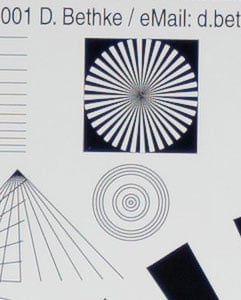 | 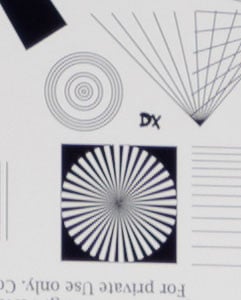 | 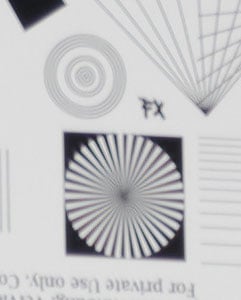 |
50mm, f4.2, 100 ISO | 50mm, f4.2, 100 ISO | 50mm, f4.2, 100 ISO |
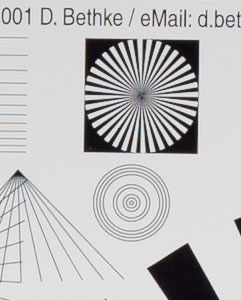 | 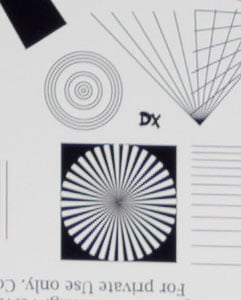 | 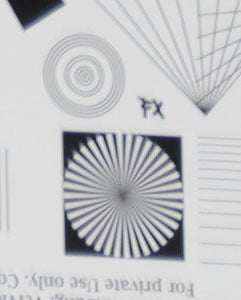 |
50mm, f5.6, 100 ISO | 50mm, f5.6, 100 ISO | 50mm, f5.6, 100 ISO |
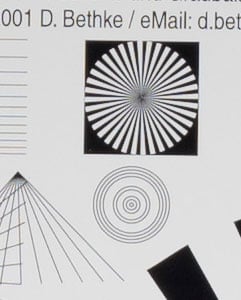 | 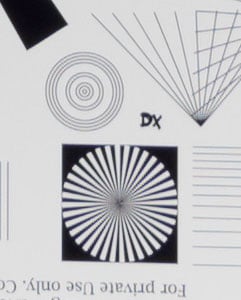 | 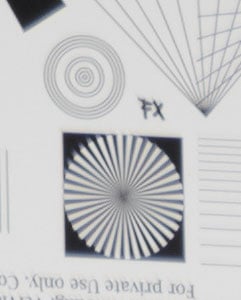 |
50mm, f8.0, 100 ISO | 50mm, f8.0, 100 ISO | 50mm, f8.0, 100 ISO |
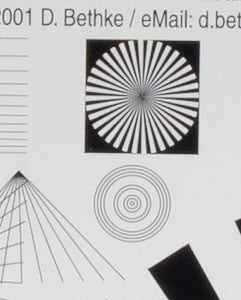 | 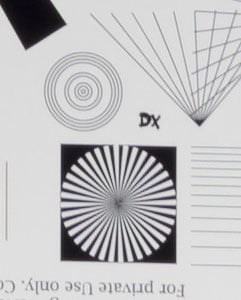 | 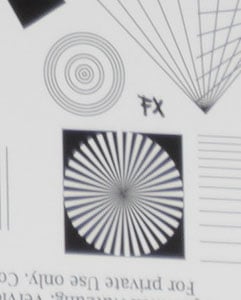 |
50mm, f11, 100 ISO | 50mm, f11, 100 ISO | 50mm, f11, 100 ISO |
The center produces crisp results from the beginning and the DX-corner looks good too. But on an FX-body with more than 12MP the corners show substantial haloing (i.e. light bleeding into darker areas) up until f11. Pincushion-distortions are pretty prominent in the FX-corner and still visible in the DX-corner.
Performance at 70mm:
Nikkor AF-S 24-85mm f/3.5-4.5G VR with Nikon D800 100% crop from center | Nikkor AF-S 24-85mm f/3.5-4.5G VR with Nikon D800 100% crop from DX-corner | Nikkor AF-S 24-85mm f/3.5-4.5G VR with Nikon D800 100% crop from FX-corner |
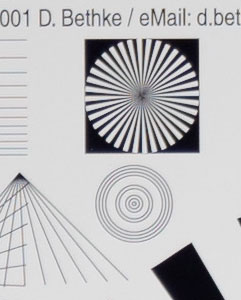 | 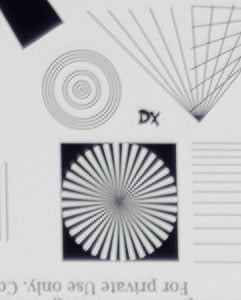 | 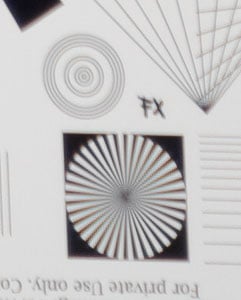 |
70mm, f4.5, 100 ISO | 70mm, f4.5, 100 ISO | 70mm, f4.5, 100 ISO |
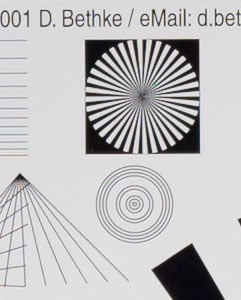 | 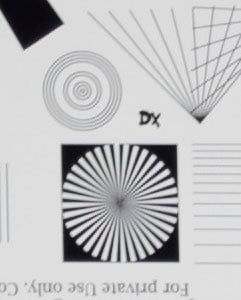 | 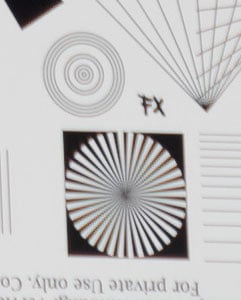 |
70mm, f5.6, 100 ISO | 70mm, f5.6, 100 ISO | 70mm, f5.6, 100 ISO |
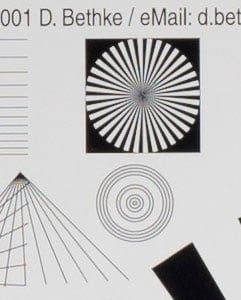 | 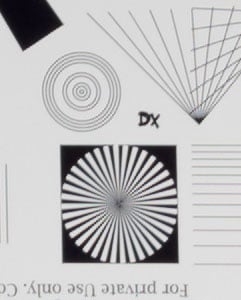 | 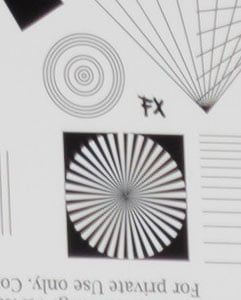 |
70mm, f8.0, 100 ISO | 70mm, f8.0, 100 ISO | 70mm, f8.0, 100 ISO |
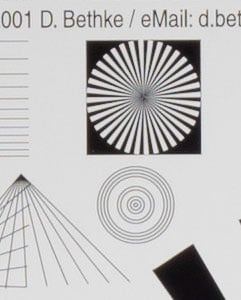 | 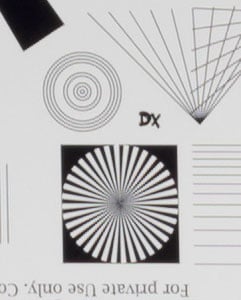 | 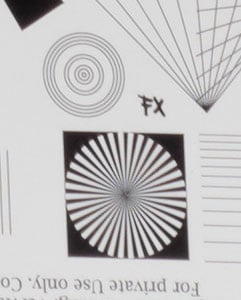 |
70mm, f11, 100 ISO | 70mm, f11, 100 ISO | 70mm, f11, 100 ISO |
Center performance continues to impress, but for best results overall at 70mm you might want to stop down to f8 – even on a DX-body.
And finally, performance at 85mm:
Nikkor AF-S 24-85mm f/3.5-4.5G VR with Nikon D800 100% crop from center | Nikkor AF-S 24-85mm f/3.5-4.5G VR with Nikon D800 100% crop from DX-corner | Nikkor AF-S 24-85mm f/3.5-4.5G VR with Nikon D800 100% crop from FX-corner |
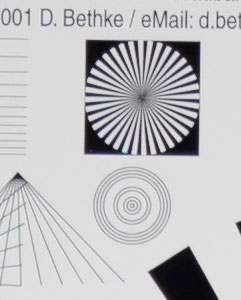 | 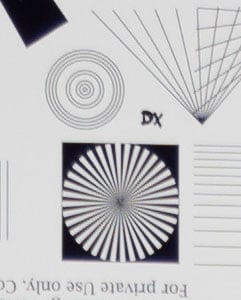 | 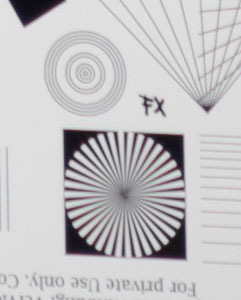 |
85mm, f4.5, 100 ISO | 85mm, f4.5, 100 ISO | 85mm, f4.5, 100 ISO |
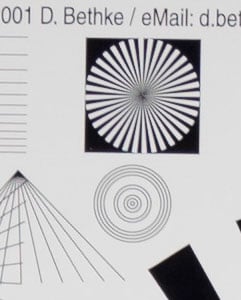 | 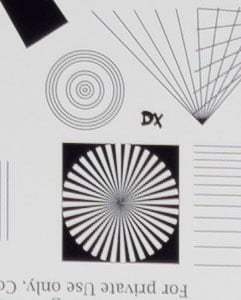 | 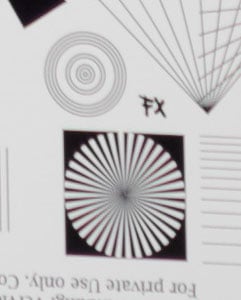 |
85mm, f5.6, 100 ISO | 85mm, f5.6, 100 ISO | 85mm, f5.6, 100 ISO |
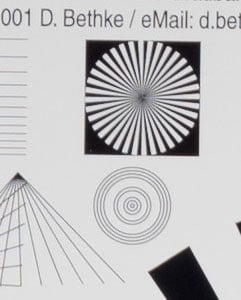 | 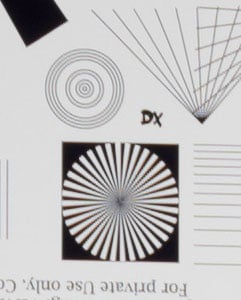 | 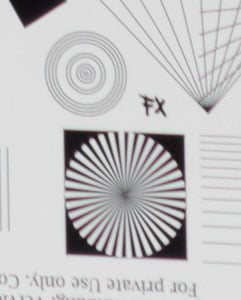 |
85mm, f8.0, 100 ISO | 85mm, f8.0, 100 ISO | 85mm, f8.0, 100 ISO |
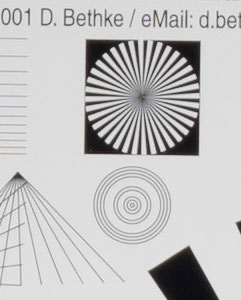 | 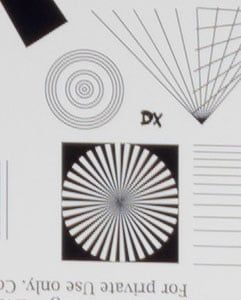 | 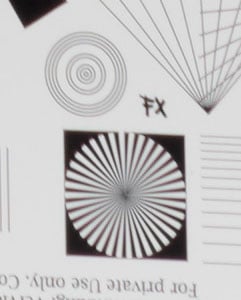 |
85mm, f11, 100 ISO | 85mm, f11, 100 ISO | 85mm, f11, 100 ISO |
Interesting observation: Performance at 85mm wide open is clearly better than at 70mm – although 85mm is only 21% longer. At 85mm the DX-corner is simply sharper and the FX-corner shows less aspherical aberrations and astigmatism than at 70mm.
Performance at large distances
The Siemens-star test-targets are shot at a distance of 40x focal length (i.e. for 50mm f.l. at 2m). But performance of lenses also depends on the shooting distance. Therefore I now regularly do another series of test-shots of a landscape where you can measure distances in km, not meter. In reference to Gordon’s classical test-shot of the Remarkables surrounding Queenstown I’ve dubbed the hills behind the town of Neumarkt the “Unremarkables”. In the morning, when the weather is clear and the sun is up I use this scene to show you how the lenses perform, when almost everything is at infinity. I set White Balance to a standard daylight value to make them comparable across lenses shot at the same day and also try to make exposure comparable. There’s no tinkering with vignette-control so you see it here as it is produced by the lens. Focus was acquired at the largest aperture in contrast-based AF and not changed for other apertures, VR was off.
You can click on each image to access the large original. Please respect our copyright and only use those images for personal use.
The main image shows the complete scene at maximum aperture to give you an impression of the angle of view and to judge vignetting). This is followed by one row of 100% crops at different apertures each from the middle and the right (FX-)border. Let’s start with 24mm focal length:
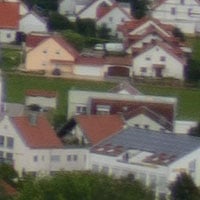 | 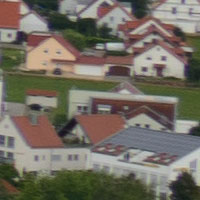 | 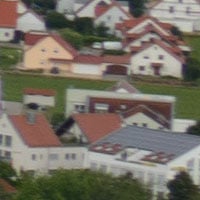 |
24mm, f3.5, 100 ISO, border | 24mm, f5.6, 100 ISO, border | 24mm, f8, 100 ISO, border |
At f3.5 the lens performs pretty good center to border. At f5.6 contrast improves and the lens shows its peak-performance with very sharp center and quite good definition at the FX-border. At f8.0 performance already degrades due to diffraction.
Here’s the view at 35mm:
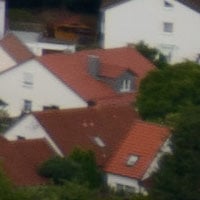 | 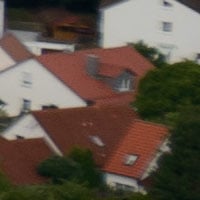 | 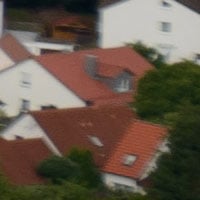 |
35mm, f4.0, 100 ISO, border | 35mm, f5.6, 100 ISO, border | 35mm, f8, 100 ISO, border |
Better performance at the center wide open than at 24mm. Stopping down to f5.6 increases center-resolution and contrast but leaves the border essentially unchanged. Again f8 is already beyond peak performance.
Now onto 50mm focal length:
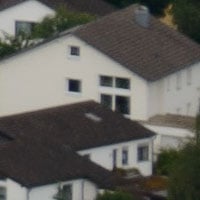 | 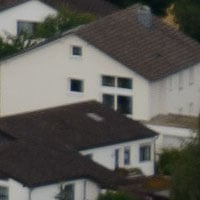 | 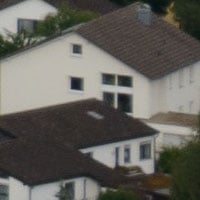 |
50mm, f4.2, 100 ISO, corner | 50mm, f5.6, 100 ISO, corner | 50mm, f8, 100 ISO, corner |
Center performance at 50mm improves slightly when stopping down to f5.6 but the border does not profit equally.
And finally at 85mm:
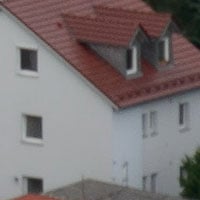 | 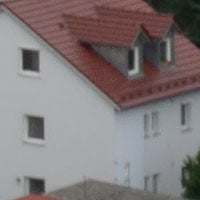 | 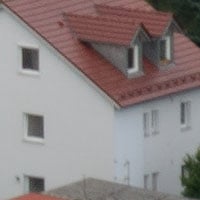 |
85mm, f4.5, 100 ISO, border | 85mm, f5.6, 100 ISO, border | 85mm, f8, 100 ISO, border |
85mm seems the only focal length that could profit from stopping down to f8. It gives another slight boost in definition and crispness. But performance wide open is not too shabby either.
|
Flare/ghosting
Shooting normal or wide-angle lenses always runs the risk of catching a strong light-source like the sun shining directly into the lens. This could produce strange colorful ghosts-images or reduce contrast considerably through flare and glare.
As the results depend on many factors including the aperture, focal length, and the angle the light hitting the lens the effect is not easy to reproduce faithfully. So I did a series of shots under conditions that provoke glare and ghosting. The image shows one of the shots from this series.
It was not easy to produce the effect and other shots showed only minimal or no ghosts. So I think the lens performs quite well, even though it has no Nano-coating.
